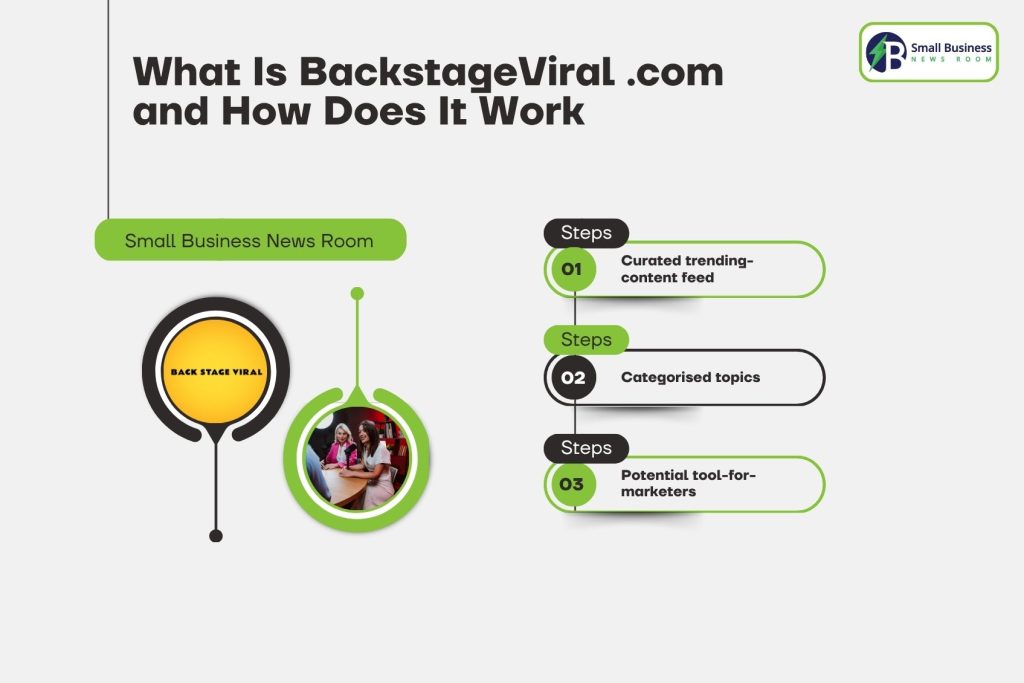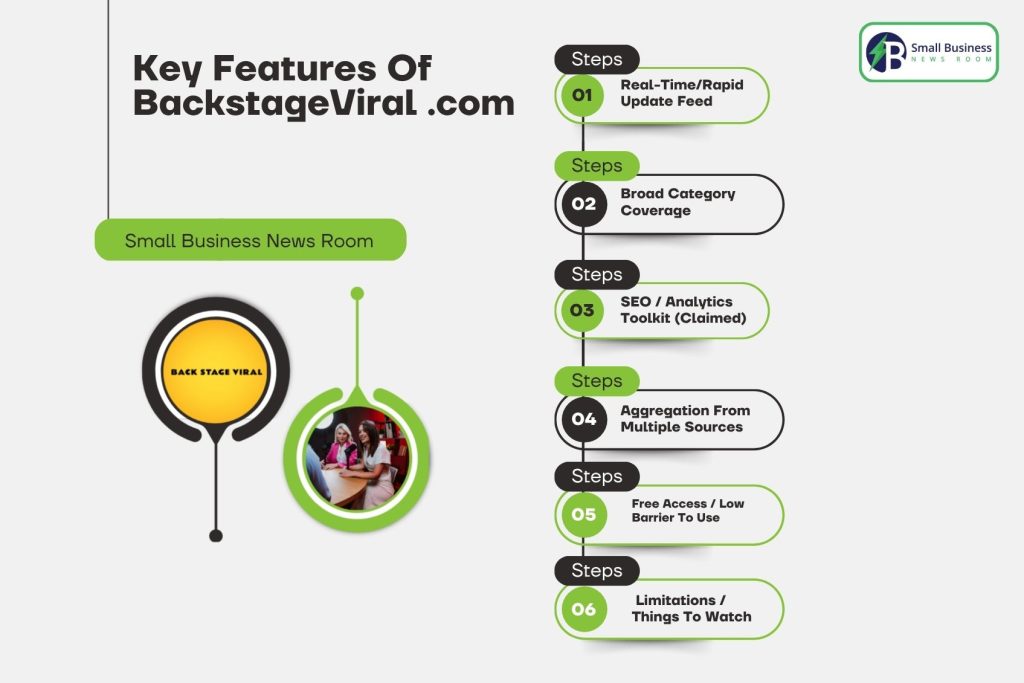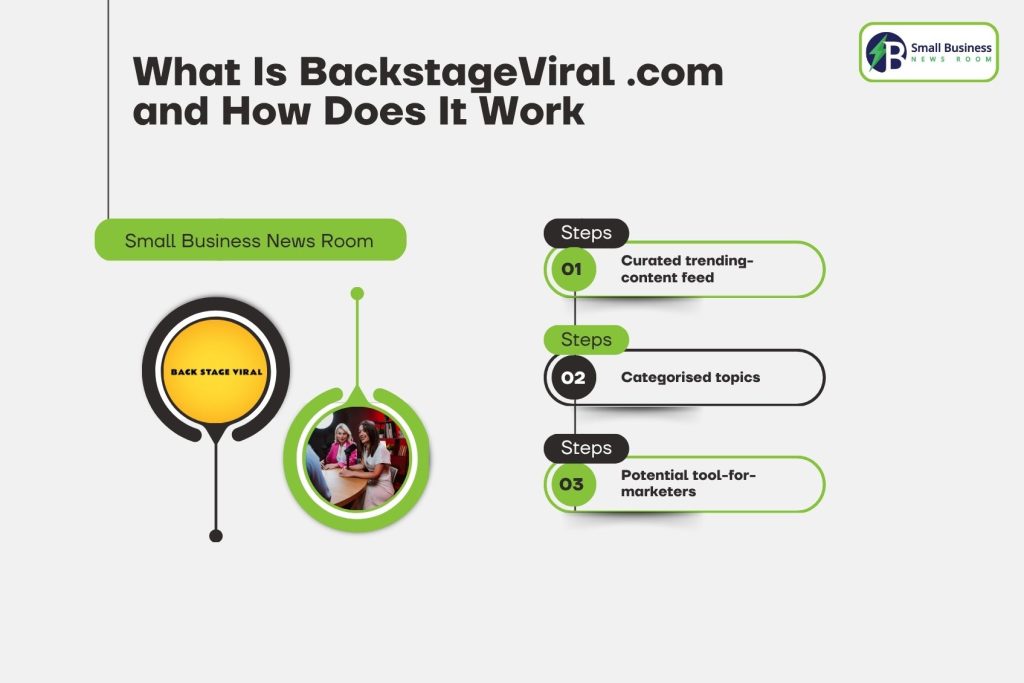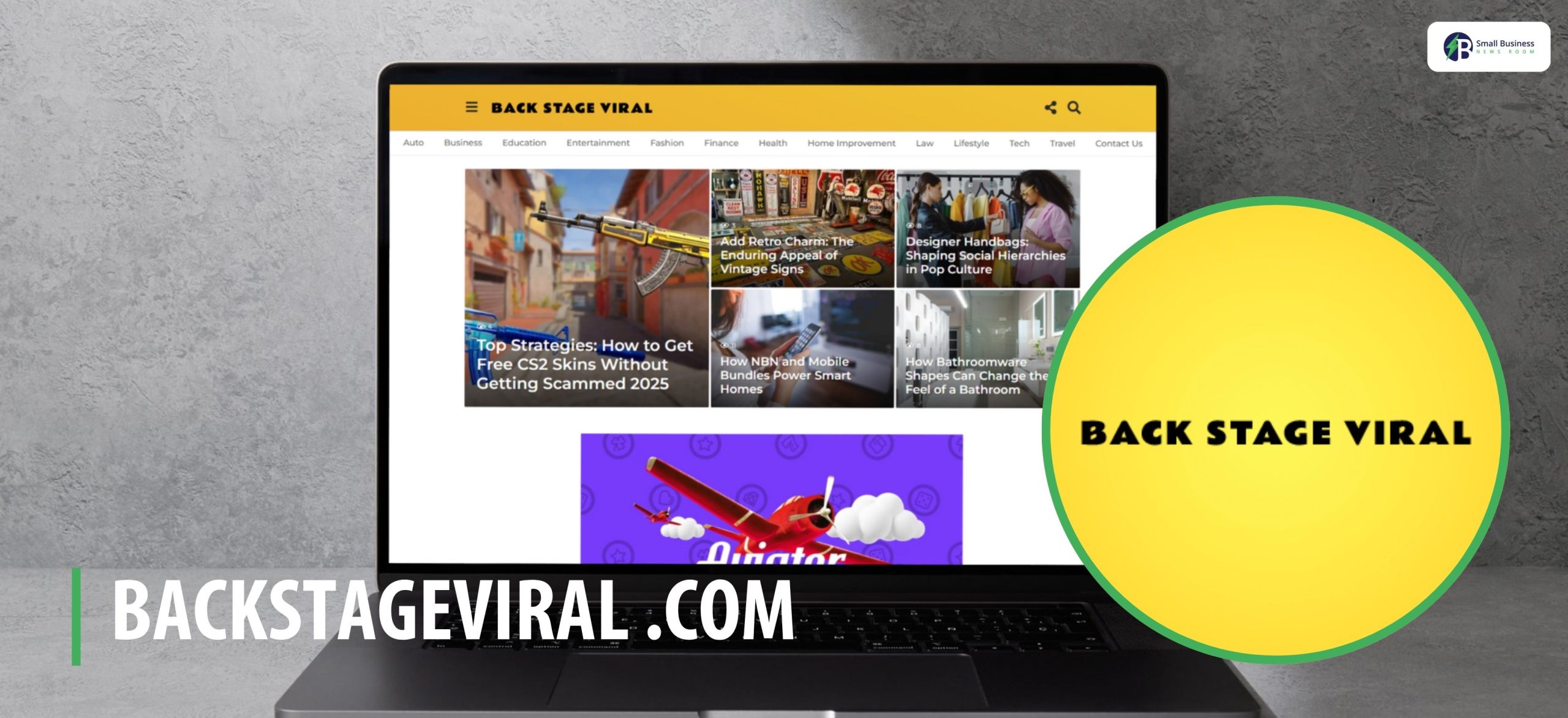Table Of Contents
- What Is BackstageViral .com and How Does It Work?
- Key Features Of BackstageViral .com
- 1. Real-Time/Rapid Update Feed:
- 2. Broad Category Coverage:
- 3. SEO / Analytics Toolkit (Claimed):
- 4. Aggregation From Multiple Sources:
- 5. Free Access / Low Barrier To Use:
- 6. Limitations / Things To Watch:
- How To Leverage BackstageViral .com For Maximum Engagement?
- BackstageViral .com Vs. Competitors: What Are The Alternatives?
- Unique advantages of BackstageViral.com
- Disadvantages / caveats:
- How To Integrate BackstageViral .com Into Your Marketing Strategy?
- 1. Pre-Content Planning Phase
- 2. Content Creation Phase
- 3. Distribution & Promotion Phase
- 4. Amplification Phase
- 5. Measurement & Optimization Phase
- 6. Feed It Into Your Broader Content Strategy
Is BackstageViral.Com The Only Way To Make Your Content Viral?
In the world of digital marketing, “going viral” is a phrase that’s thrown around a lot but the reality is that for many businesses, achieving true viral reach feels like chasing lightning in a bottle. Enter BackstageViral .com (sometimes styled “Back Stage Viral”).
It is primarily a platform that purports to help you spot, leverage, and ride the waves of trending content. On their homepage, they describe themselves as “Posts That Gets Viral” and showcase categories such as Business, Education, Entertainment, and Lifestyle.
So, why is this relevant to you if you’re running a business or managing content? Because if you can tap into what people are already sharing, you can shortcut some of the work of content generation, audience building, and engagement.
For a business looking to amplify its content whether blog posts, social posts, or video a platform that curates and surfaces viral-ready material could be useful.
That said, it’s important to ask whether BackstageViral .com is the only way to make your business content viral (spoiler: almost certainly not), and how you should realistically think of it in your toolkit.
What Is BackstageViral .com and How Does It Work?

BackstageViral.com acts primarily as a content discovery or aggregation platform. In a review of the site, it’s described as “a content discovery platform designed to keep you in the loop about the most viral moments on the internet.”
The platform clearly explains how it really works. Here’s a breakdown of how it works, and how you might use it for business content:
Curated trending-content feed: The site pulls together articles, memes, videos and other items that are gaining traction (or at least claim to be). For example, their “Hot” page updates frequently with a stream of items.
Categorised topics: The platform lists posts under categories like Business, Entertainment, Health, etc., making it easier for you to zero in on your niche or broader themes.
Potential tool-for-marketers: Some write‐ups of BackstageViral.com suggest it supports content strategy by exposing you to what’s trending, which you can then adapt for your brand. For example, according to White Mov, “By combining SEO tools, AI insights, and real-time alerts, it allows you to optimize and share posts that align with what’s trending.”
In the viral content space, BackstageViral occupies a niche between social-media listening tools, trend-aggregators, and content inspiration hubs.
For your business, the question becomes: “Can I use this platform to gain online presence?” The answer is yes — as part of a broader strategy.
It can help you spot themes, get inspired, and align your content with what might catch fire. However, by itself, it’s unlikely to guarantee viral success (more on that later).
Key Features Of BackstageViral .com

Let’s talk about what appears to be the core features of BackstageViral .com, and how they differentiate (or don’t) from other tools.
1. Real-Time/Rapid Update Feed:
Firstly, the site claims to deliver “viral content” that’s fresh and trending, so users don’t have to manually sift through many platforms. For example, the review by Infusionics says: “As new viral content emerges, it’s added to the site in real-time.”
But why does this matter? Well, for a business, catching a trend early means you can ride it rather than react late.
2. Broad Category Coverage:
BackstageViral covers multiple verticals: Technology, Health, Business, Lifestyle, and Entertainment. This allows a business to pick the category that aligns best with their audience.
3. SEO / Analytics Toolkit (Claimed):
According to one write-up, the platform includes a “SEO and Analytics Toolkit for Creators,” including trending keyword suggestions, previews of how posts will appear in search engines, and monitoring tools.
But why is this differentiating? Many trend-aggregators stop at surfacing content; adding a layer of optimization makes it more useful for businesses trying to convert awareness into action.
4. Aggregation From Multiple Sources:
The review indicates it pulls content from sources like Google Trends, Twitter API, Instagram, TikTok, etc.
5. Free Access / Low Barrier To Use:
The platform appears to be free to access (or nearly so), making it accessible for small businesses or content creators.
6. Limitations / Things To Watch:
Finally, while this isn’t a “feature,” it’s worth noting as part of the full picture. Some reviewers highlight that the content quality varies, personalization is limited, and the site lacks deep community or engagement features.
How To Leverage BackstageViral .com For Maximum Engagement?
So you’re convinced it might help. But how do you actually use BackstageViral .com to produce content that engages, shares, and goes viral (or at least performs very well)? For instance, here are actionable tips:
- Monitor trending topics before you launch content.
- Use the optimization/SEO suggestions to headline your content.
- Create content in the right format for sharing.
- Repurpose trending content for your business angle.
- Publish and distribute at the right time.
- Invite user participation.
- Track performance and iterate.
BackstageViral .com Vs. Competitors: What Are The Alternatives?
It’s never wise to rely on a single tool. So how does BackstageViral .com stack up against alternative platforms or strategies for viral content? Let’s compare:
| Platform / Strategy | Strengths | Weaknesses |
|---|---|---|
| BackstageViral.com | Easy trend-spotting, multiple categories, potential SEO/analytics tools. | Mostly aggregation, limited original content, less community-centric engagement features. |
| Social listening tools (e.g., Brandwatch, Talkwalker) | Deep analytics, sentiment tracking, real-time monitoring across platforms. | Higher cost, steeper learning curve, may require more manual work to translate insights into content. |
| Viral video platforms (e.g., TikTok, YouTube) | Direct distribution of viral-type content, built-in share & engagement mechanisms. | Requires strong content creation capabilities, competition is fierce, platform algorithms unpredictable. |
| Influencer / UGC campaigns | Leverages built-in networks and trust, can amplify reach quickly. | Requires careful selection of influencers, cost, and alignment with your brand; virality still not guaranteed. |
| Traditional amplification + PR (e.g., paid ads + outreach) | You control budget and targeting; can boost content visibility. | May lack “viral” feel (organic share) and cost-effectiveness for small businesses can be limited. |
Unique advantages of BackstageViral.com
- Lower cost / barrier for smaller players to spot trends.
- Quick access to a stream of viral-type inspiration across categories.
- Combination of trend discovery + optimization tool mix is less common among purely aggregation sites.
Disadvantages / caveats:
Just because a topic is trending doesn’t guarantee your piece will go viral — execution still matters heavily.
The site may have variable content quality and limited interactive/community features (so you’re still doing a lot of the heavy lifting).
It’s not a full distribution platform — you still need to use your channels (social, email, blog) to push and amplify.
So no — BackstageViral .com isn’t the only way to make business content viral. Rather, it is one tool among many, and how well you use it will determine results.
How To Integrate BackstageViral .com Into Your Marketing Strategy?

Want to ensure that you are able to integrate the platform and its use into your marketing strategy? Well, I have you covered! Here’s how you can weave BackstageViral .com into your existing marketing strategy — especially if you’re writing for your own business (or your client’s business) and have a limited budget.
1. Pre-Content Planning Phase
Firstly, start your content calendar by scanning BackstageViral.com for trending items in your niche (e.g., food/restaurant trends, dining experiences, social media challenges).
Filter for things that are relevant to your brand and audience (for your restaurant business, you might look for viral food videos or “restaurant fails,” or “creative plating”).
Select 1–2 trends per month that you can realistically convert into a unique piece of content.
2. Content Creation Phase
Secondly, use the trend as the hook, but bring in your brand’s voice and value proposition.
Write the piece (blog, social post, video script) with SEO best practices: keyword usage, internal links, and high-quality visuals.
Optionally use BackstageViral’s SEO/analytics features (if valid) to refine your headline, tags, meta description, and suggest optimal posting times.
3. Distribution & Promotion Phase
Thirdly, publish the content on your primary asset (your website/blog) and social channels (Instagram, Facebook, TikTok, whatever your audience uses).
Include share triggers: ask readers to tag friends, comment, share their experiences, or challenge them (if relevant).
Additionally, use the trend’s hashtag and keywords discovered via BackstageViral to tap into existing momentum.
4. Amplification Phase
Reach out to influencers or micro-influencers who might share with their network (you might have budget constraints, so micro-influencers are cost-effective).
Moreover, consider repurposing the content: for example, a blog post becomes a short video, then a carousel for Instagram, then a story poll.
5. Measurement & Optimization Phase
After 48–72 hours, check performance metrics: shares, comments, traffic, time on page, conversions (e.g., booking a table at your restaurant).
Use what you learn to optimize future content. Additionally, if certain formats (videos vs blog posts) or topics (food hacks vs behind-the-scenes) perform better, adjust your calendar accordingly.
6. Feed It Into Your Broader Content Strategy
Finally, use BackstageViral as a “trend spotting” input. Combine that with your keyword research, audience insights, and SEO strategy. Furthermore, align the viral-inspired content with your brand’s objectives: brand awareness, lead gen, conversions, and community building.














